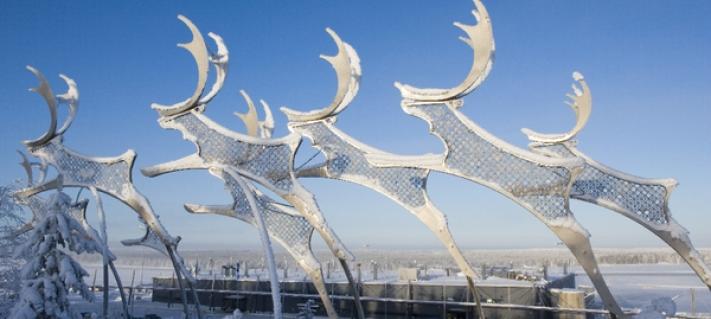What keeps the plane up – the forces at play on the wing
The Airbus A380 is the world's largest passenger airliner, with the capacity to carry 853 passengers. Its wingspan is some 79.8 metres and surface 845 square metres – enough material to cover more than four tennis courts.
One answer to ‘What keeps a plane in the air?’ is the lifting force created at its wings. This force of lift comes from the difference in pressure, with the pressure on the upper surface of the wing being lower than that on the underside. Most of the lifting force is created at the upper surface of the wing.
The intensity of lift is determined by factors such as flight velocity and altitude, the angle between the wing and the flowing air, wing size and shape, and whether the wings are free of ice and other material that can accumulate aloft. This is why plane wings are de-iced at airports.
Aeroplanes are controlled by the flaps, air brakes, and slats mounted on the wings.
Another innovation is winglets, near-vertical elements at the tips of the wings, with the purpose of increasing the lifting force and reducing fuel consumption.
Less drag at higher altitudes
A significant proportion of the cost of flying comes from the fuel. Drag has a huge impact on the fuel consumption of planes flying at high velocities – when the aircraft’s speed doubles, drag quadruples.
To keep drag as low possible, aircraft are designed to be sleek and streamlined. Flying at high altitudes, where there is less air to resist motion, is another way to reduce drag, and aeroplanes at higher altitudes can also benefit from the jet stream. The term refers to high-speed wind currents found in narrow bands at altitudes of over five kilometres. These are brisk winds – blowing at up to 120 metres per second, they can help to whisk the planes along to their destinations and reduce the amount of fuel needed.
Decades of work have been devoted to finding other ways to decrease fuel consumption. The results have included improvements in aerodynamics, engine technology, and many other technical solutions. The amount of fuel consumed per passenger has decreased by some 70% over the last 40 years, and with every new generation of aircraft comes a roughly 20% decrease in fuel consumption. Modern planes use approximately three litres of fuel per passenger for every 100 kilometres they fly.
The air’s oxygen concentration decreases higher up in the atmosphere. This is one reason so few people have been able to reach the top of Mount Everest (which rises to 8,848 m) without supplemental oxygen.
Pilots and the professionals in air traffic control too have tricks to helping reduce the consumption of fuel. When a plane comes in to land with the so-called continuous descent approach, the savings can be as great as several hundred kilos of fuel. At Helsinki Airport, this method is already used for roughly 60% of landings.
Less air pressure at higher altitudes
The design of the human body is suited to the levels of air pressure found near sea level. Air pressure decreases with altitude, and the air pressure at five and half kilometres is half of sea-level air pressure. At 10 kilometres up, it is a quarter of that found at sea level.
On an aeroplane, the air pressure is mechanically kept at levels corresponding to conditions near sea level. However, the air pressure in the cabin may vary a little during ascent and descent, and some passengers can feel this in their ears. One way of preventing your ears from feeling uncomfortable or stuffy is to chew gum during take-off and landing.
Along with air pressure, the oxygen concentration decreases as one heads further from the surface of Earth and a little closer to space. Aeroplanes have automatic systems that keep the oxygen concentration within the plane at an appropriate level no matter the height.
Frosty beauty
When peering out from those small aeroplane windows, you aren’t always aware of how cold it can be out there even in the brightest of sunshine.
The temperature decreases by some 5–8 °C for each kilometre from the ground, dipping as low as -50 °C.
Text: Sami Laakso



